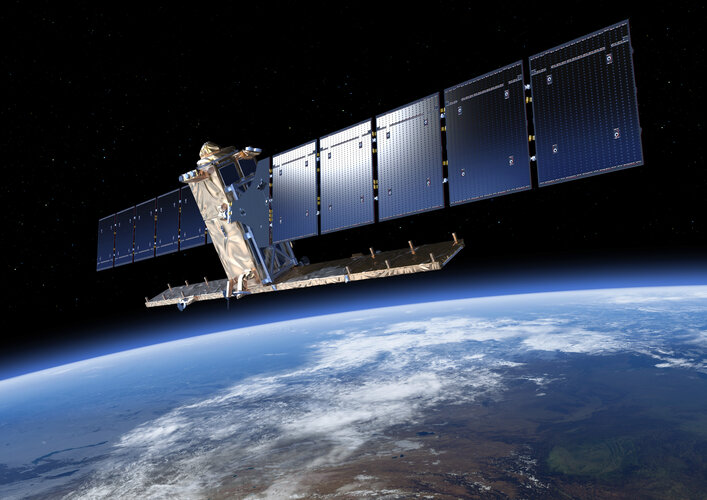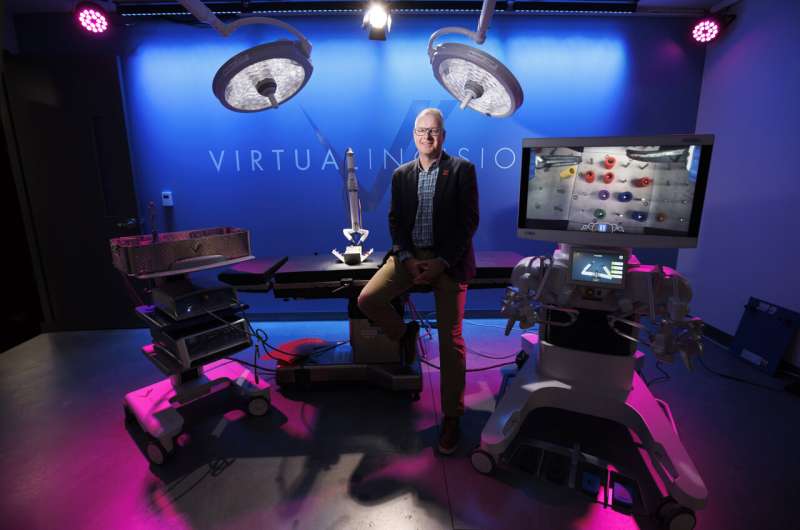
Copernical Team
SpaceX rocket fueled for launch this week to send Korean mission to moon
 South Korea and SpaceX are fueled and ready to send a spacecraft on a long journey this week that will ultimately take it around the moon.
The Korea Pathfinder Lunar Orbiter is scheduled to launch on Tuesday night from Cape Canaveral in Florida on the back of a SpaceX Falcon 9 rocket.
The KPLO is expected to go into a low-altitude orbit around the moon after it breaks free of the
South Korea and SpaceX are fueled and ready to send a spacecraft on a long journey this week that will ultimately take it around the moon.
The Korea Pathfinder Lunar Orbiter is scheduled to launch on Tuesday night from Cape Canaveral in Florida on the back of a SpaceX Falcon 9 rocket.
The KPLO is expected to go into a low-altitude orbit around the moon after it breaks free of the Solar storm expected to hit Earth, but likely 'weak,' forecasters say
 A solar storm birthed from a hole in the sun's atmosphere is expected to hit Earth's magnetic field Wednesday.
Scientists with the National Oceanic and Atmospheric Administration's Space Weather Prediction Center are calling for a chance of a geomagnetic storm, caused by a southern hole in the sun's atmosphere.
The gaseous material is flowing from the hole in the sun's atmosphere
A solar storm birthed from a hole in the sun's atmosphere is expected to hit Earth's magnetic field Wednesday.
Scientists with the National Oceanic and Atmospheric Administration's Space Weather Prediction Center are calling for a chance of a geomagnetic storm, caused by a southern hole in the sun's atmosphere.
The gaseous material is flowing from the hole in the sun's atmosphere Remote surgery robot to be tested aboard ISS
 A miniaturized robot invented by Nebraska Engineering Professor Shane Farritor may soon blast into space to test its skills. NASA recently awarded the University of Nebraska-Lincoln $100,000 through the Established Program to Stimulate Competitive Research (EPSCoR) at the University of Nebraska Omaha to ready the surgical robot for a 2024 test mission aboard the International Space Station.
A miniaturized robot invented by Nebraska Engineering Professor Shane Farritor may soon blast into space to test its skills. NASA recently awarded the University of Nebraska-Lincoln $100,000 through the Established Program to Stimulate Competitive Research (EPSCoR) at the University of Nebraska Omaha to ready the surgical robot for a 2024 test mission aboard the International Space Station. Mission ends for Copernicus Sentinel-1B satellite

On 23 December 2021, Copernicus Sentinel-1B experienced an anomaly related to the instrument electronics power supply provided by the satellite platform, leaving it unable to deliver radar data. Since then spacecraft operators and engineers have been working tirelessly to rectify the issue. Unfortunately, despite all concerted efforts, ESA and the European Commission announce that it is the end of the mission for Sentinel-1B. Copernicus Sentinel-1A remains fully operational and plans are in force to launch Sentinel-1C as soon as possible.
Webb telescope captures colorful Cartwheel Galaxy

Remote surgery robot to be tested aboard International Space Station

A miniaturized robot invented by Nebraska Engineering Professor Shane Farritor may soon blast into space to test its skills.
NASA recently awarded the University of Nebraska-Lincoln $100,000 through the Established Program to Stimulate Competitive Research (EPSCoR) at the University of Nebraska Omaha to ready the surgical robot for a 2024 test mission aboard the International Space Station.
"NASA has been a long-term supporter of this research and, as a culmination of that effort, our robot will have a chance to fly on the International Space Station," Farritor said.
Farritor is co-founder of Virtual Incision, a startup company based on Nebraska Innovation Campus. For nearly 20 years, he and his colleagues have been developing the tiny surgical robot known as MIRA, short for "miniaturized in vivo robotic assistant.
Utah's Great Salt Lake is disappearing
 Utah's Great Salt Lake dropped to its lowest recorded water level last month as a megadrought persists across the US southwest, forcing the fast-growing city to curb its water use. From space, satellite images show how water levels have fallen from 1985 to 2022 - exposing large expanses of lakebed.
According to data from the US Geological Survey, the Great Salt Lake's surface water elevati
Utah's Great Salt Lake dropped to its lowest recorded water level last month as a megadrought persists across the US southwest, forcing the fast-growing city to curb its water use. From space, satellite images show how water levels have fallen from 1985 to 2022 - exposing large expanses of lakebed.
According to data from the US Geological Survey, the Great Salt Lake's surface water elevati Using satellite imagery to protect the environment and assist humanitarian aid
 Every year, the Airbus Foundation delivers satellite imagery covering tens of thousands of square kilometres around the globe to support its partners involved in humanitarian aid and protecting the environment. As the number of requests continues to grow, the Foundation has significantly extended the range of products and services offered - including new types of imagery, photo interpretation an
Every year, the Airbus Foundation delivers satellite imagery covering tens of thousands of square kilometres around the globe to support its partners involved in humanitarian aid and protecting the environment. As the number of requests continues to grow, the Foundation has significantly extended the range of products and services offered - including new types of imagery, photo interpretation an Rocky road ahead still not the good kind: Sols 3548-3550
 For this 3-sol weekend plan, I worked as the Tactical Uplink Lead. This morning we came in to discover that the drive had stopped early due to high slip on the steep terrain, and our parking place was not a safe spot to unstow and use the arm. So we quickly switched gears and loaded up the plan with lots of remote science.
This terrain is particularly beautiful, so the opportunity to take
For this 3-sol weekend plan, I worked as the Tactical Uplink Lead. This morning we came in to discover that the drive had stopped early due to high slip on the steep terrain, and our parking place was not a safe spot to unstow and use the arm. So we quickly switched gears and loaded up the plan with lots of remote science.
This terrain is particularly beautiful, so the opportunity to take Modeling reveals how dwarf planet Ceres powers unexpected geologic activity
 For a long time, our view of Ceres was fuzzy, said Scott King, a geoscientist in the Virginia Tech College of Science. A dwarf planet and the largest body found in the asteroid belt - the region between Jupiter and Mars speckled with hundreds of thousands of asteroids - Ceres had no distinguishable surface features in existing telescopic observations from Earth.
Then, in 2015, the hazy orb
For a long time, our view of Ceres was fuzzy, said Scott King, a geoscientist in the Virginia Tech College of Science. A dwarf planet and the largest body found in the asteroid belt - the region between Jupiter and Mars speckled with hundreds of thousands of asteroids - Ceres had no distinguishable surface features in existing telescopic observations from Earth.
Then, in 2015, the hazy orb 
